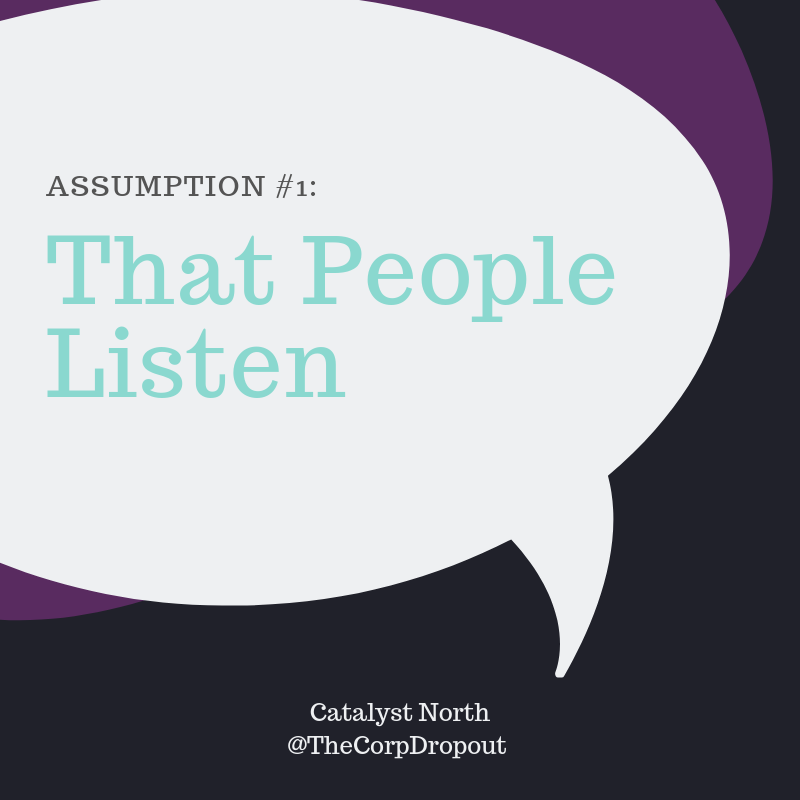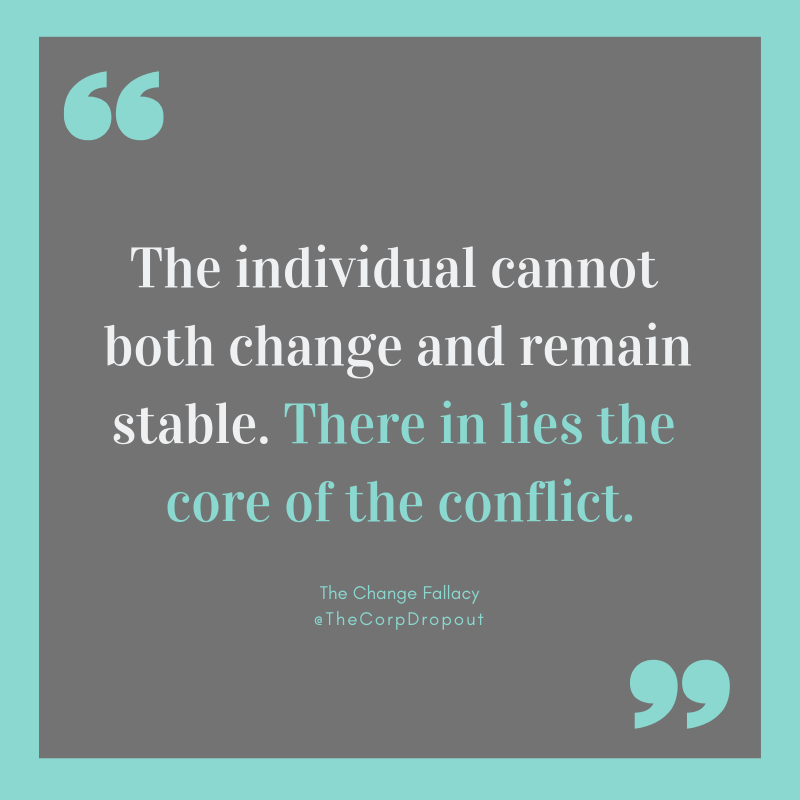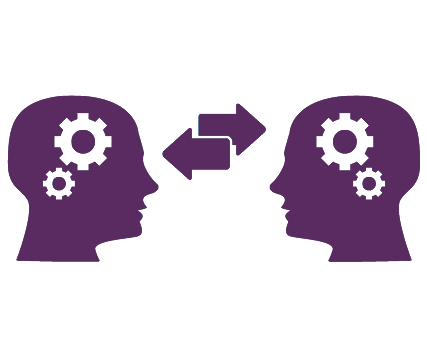Oh….how these words cause tension and anxiety in all who hear them.
This phrase is one that is often echoed around the table of practically every organization I work with. It typically stems from frustration of the speaker as they lament yet another failed initiative, missed deadline or dropped responsibility. It is paired with a looming accountability discussion that is dreaded by all and backed by long standing patterns of behavior that no one has any idea how to break.

So the question then becomes….why is change so hard? Why do we struggle uphill and through quicksand to implement and sustain even simple shifts that should (in theory at least) increase both morale and productivity?
It’s a push me/pull you of a discussion that we could spend the rest of our days on and still not find full agreement, but I want to present a slightly different view on the issue.
See, the reality is that “change” isn’t the issue….thus our reluctant acceptance of the Change Fallacy. Sure, change is often cast as the villain and is a trendy buzz word that is first cousin to the “busy” claim we all know I hate. But change is nothing more than an idea. It’s a concept that we play victim to rather than approach with a clear mind and a tactical strategy.
Well then, if change isn’t the problem….what it?
Simple…. Implementation and Sustainability.
Implementation
To really dig into this topic, I think we need to start with the idea of implementation and go back to the phrase that kicked us off for the day.
“But I told them to do it!”
My friends there is simply SO MUCH here for us to be aware of. So much that we tend to gloss over and ignore because it’s easier to pretend it doesn’t exist rather than face the real heart of the matter.
Let’s break this down a bit.
Assumption #1 – That people listen.
A show of hands. How often does it happen that we say something once and instantly people react? For most of us….not often. And further than that, we are all guilty of the same behavior. We tend to expect others to react immediately and yet we are not willing to do so ourselves.
Are you ready for one of the best, most applicable facts I can ever give you? Here it is…..Adults need a reason to change.
Now don’t just gloss over that! Go back. Read it again and etch it into your mind as a new kind of golden rule. Adults NEED a REASON to change. Therefore just telling them to do something is rarely, if ever, going to generate consistent lasting results.
So if we want to drive change, then we need to look at our own communication. Because I promise communication and approach is where it all starts.
Assumption #2 – That people understand what we are asking them to do.
Oh….this. See now here is the core of the matter that most of us simply don’t want to face or accept. Why? Because we feel like we are strong communicators. And to admit that people don’t understand what we are asking of them means admitting flaws in our own approach and strategy.
And yet…I promise this is THE problem. I see it again and again and it doesn’t matter who’s logo is painted on the wall, the disconnect remains the same. Simply put, as leaders we feel as though we are being crystal clear in our words and directives. Only what is clear to us causes confusion and disconnect in our teams.
Therefore when we move to implement we must first take the time to communicate in a way that connects with our audience as we check for understanding and offer increased clarity at each step.
Sustainability
Once a change or directive is introduced the question shifts to focusing on you as a leader. In short, what are YOU doing to help develop and sustain these new behaviors?
Why is this question hard? Well again, the answer is multi-faceted.
Obstacle #1 – Mirror Time
The idea of “mirror time” is one I talk about often with my clients. It is the process of being not just willing but even open and consistent in terms of self-accountability.

Allow me to explain. Have you ever heard someone say something along the lines of, “I don’t know why this keeps happening to me?!?!”?
Now, typically when we hear this phrase or any of its first cousins, we tend to practice our poker face as we look at the speaker and think “I can tell you why!” The reason being, it is much easier to see patterns of behavior in others than it is ourselves.
Therefore in terms of sustainability, if you are struggling with sustaining outcomes within your team, the first step is to look at your own habits and behaviors. Odds are strong that somehow (likely unknowingly!) you are contributing to the outcomes you dislike so strongly. And, once you pinpoint the behavior, then you have the opportunity to change it.
Change your behavior – Change your outcomes!
Obstacle #2 – Consistent Investment
The other issue stems from the emotional component of change. The reality is that growth is a process that is rooted as much in psychology as it is action. It requires the breaking of often long held, deeply ingrained habits while simultaneously nurturing new behaviors to take root and thrive.
At the individual level, this kind of adjustment can be very difficult. When change fails, organizations naturally seek answers. At this point, their efforts typically focus on problems stemming from execution, yet they fail to investigate the impact of the change at the individual level.
The reality is that as team members work to understand and utilize new and unfamiliar concepts, it is common for those who work within the system to become skeptics, procrastinators and even active resisters. In this circumstance, inaction is used as a form of aggression by those who do not believe they have the freedom to communicate, therefore their actions show what their words do not.
This behavior is linked to a basic internal conflict. On one hand, the individual does seek and desire a different basic state, yet they also desire stability. Therein lies the core of the conflict. The individual cannot both change and remain stable. It is a reality that is at odds and therefore causes turmoil.
A New Approach
The goal here is awareness. My hope is that each of you who reads this will take the time to really dig down into the obstacles you are facing as you seek the true core of the issue and work to build new, healthy habits within both your team and your organization.
If Implementation and Sustainability are topics you find yourself struggling with, then my team has put together a tool to help you diagnose the root of the problem and seek clarity on how to move forward effectively. Because in today’s business world change is practically the only constant we face. Therefore we learn to do it effectively or we risk being left behind as others succeed where we fail.
Now I would LOVE to tell you that this is the end of the journey in conquering change, but there are still mountains to climb. Moving forward we will take a closer look at the emotional link between fear and resistance. Until then, if you have any questions my team is ready and willing to help you find the answers you need. Be it virtual or face-to-face our goal is to help you find success as you define it.



